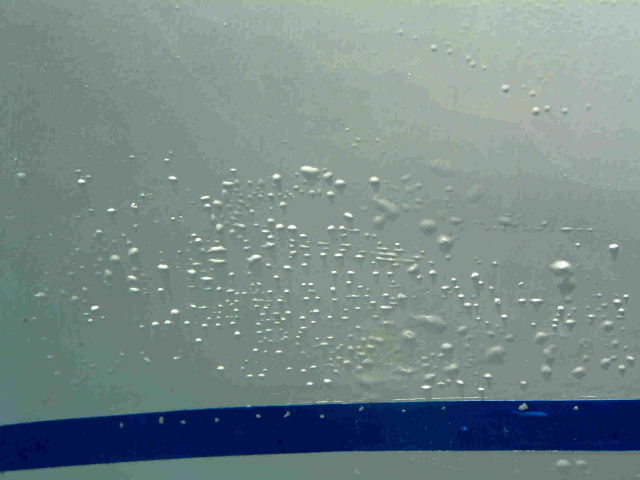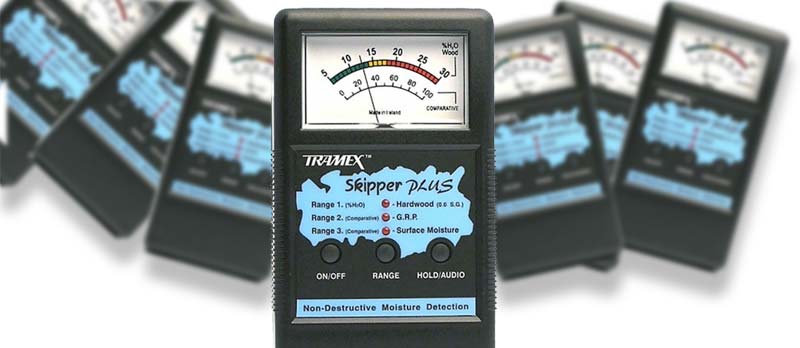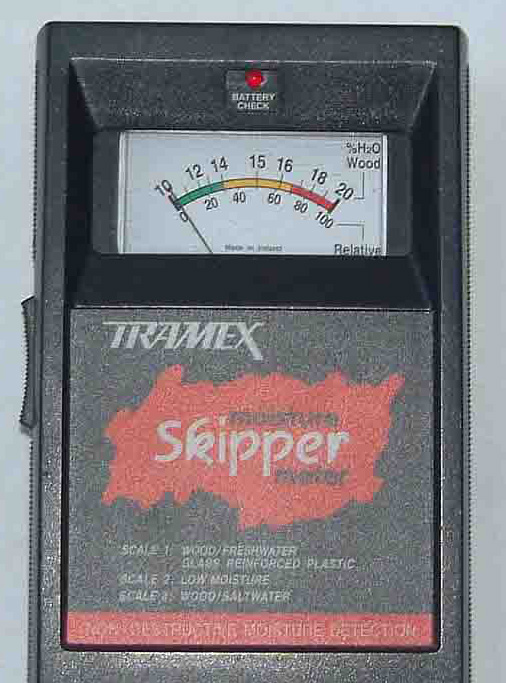

There are various causes of blistering gel coat and not all of them are as serious as one might first think.
When the gel coat is first applied to the hull in the mould it has to be mixed thoroughly to fully spread the catalyst throughout the mix, it should then stand for a short while to allow the air bubbles to escape If the mix is applied too quickly, it cures with gel coat aeration
and these bubbles lie near the surface of the gel coat near the hull.
They absorb small quantities of water and eventually swell and occasionally burst, but before they burst the hull develops a lot of small 3mm diameter blisters which are often mistaken for osmosis blisters. A good surveyor should be able to differentiate between these and osmosis blisters.
When gel coat is painted with polyurethane 2 pot finishes, particularly if sprayed, polyurethane paint is not as waterproof as epoxy and long term exposure to water, near the waterline for instance, causes the paint to blister as seen in the photo close by. Not serious. Also when two pot polyurethane is sprayed in high humidity conditions, water gets trapped in the coating and might go on to develop blisters anywhere in the area coated. Again, not structurally serious.
Links to useful pages on this site
Home
Yacht surveys
Yacht surveys timber and general info
Fishing vessel inspection for the MCA
Survey faults and photos
Shipwright info
More contact info
PDF Articles on all subjects
Links to useful sites.
Selling a boat tips
Repair Timber and GRP boats
Buying a Boat
Selling a boat
This is NOT osmosis blistering, it is just water blistering under a paint finish and although cosmetically not good, structurally insignificant.

However, the photo below is osmosis blistering and although it is not structurally serious at present, it is likely to get worse over time although that time might be many years. Perhaps the most important aspect of blistering is to make sure what you are looking at.
If you can imagine the hull as a thick, but very fine filter, allowing water to pass through exceptionally slowly because of the fineness of the mesh, it is so slow that the water evaporates away on the inside of the hull instead of dripping through. This action is normal, but at some stage, the water that is in the laminate starts to break down and dissolve the stray chemicals left in the lay up, these new compounds are much denser than the water that helped create them, and because the mesh (the hull) is so fine, they cannot escape.
The majority of grp vessels have myriads of small voids throughout the construction; it is thought that these voids become the starting point for initial breakdown into new chemicals. More water continues to combine with them and increase their volume and density but as their escape route is blocked, they form blisters to make enough room, this slow process continues until they are released by gel coat removal and flushing all reaction chemicals away. In extreme cases the laminate can be forced to delaminate as the pressure of the blister fluid increases, when formation of blister fluid is deep within the laminate.
Download PDF article

A moisture meter indicates the presence of water and blister fluid, but does not differentiate between water and the blister fluid, the water dries out, but the blister fluid does not, therefore the reason for watching how the readings change. It is also not unknown for gel coat blisters to simply be caused by gel coat aeration bubbles when the original gel coat was vigorously mixed and applied, with the inclusion of air bubbles which subsequently show as small blisters as they become water filled. This type of blister is not usually of any consequence. Before commencement of any remedial treatment, investigation into which type of blister is present is crucial to avoid unwarranted work.
Well, that is not easy to quantify, on a vessel over 25 years or so of age, one might expect to see some laminate deterioration caused by chemical activity taking place in the hull and accept it as par for the course. Some vessels that have been epoxy coated long before the hull became active are probably still free from blistering although one has to be aware that many owners will disguise blistering by flatting it down and coating with epoxy resin based finishes. This will prove very difficult to assess for blistering, and one pointer would be very high moisture meter readings, but some vessels with very high readings will never go on to develop blisters.
So, be wary of the older vessel that has been recently epoxy coated but has very high moisture readings. This might not be as free from blisters at the end of the season as it was at the start.
Do I get the boat treated
Osmosis treatment usually comprises of gel coat removal, sand blasting and a degree of new laminating followed by intensive fairing, filling and epoxy coating, A considerable amount of labour intensive work. If you go down this route on an older vessel it will often cost a considerable percentage of the value of the boat and almost certainly will not add the cost of the repairs to the value. It would cost the same amount to treat a 30ft vessel that was worth £25000 as one that was worth £10000.
Preventing osmosis
Definitely better than the cure, if not too late. The first thing to do would be to get accurate moisture meter readings taken. Either take your own readings with a suitable instrument or get a surveyor to assess the readings and advise. Generally using the Tramex set on Range 2 (most sensitive range) the maximum acceptable readings before applying epoxy protective finishes
would be a 50% scale deflection. This equates to 15 on the 10-20 scale.

If the readings are acceptable then all that is required is to remove all the antifouling back to clean dry gel coat, full abrasion and applying the chosen epoxy as per manufacturers instructions. Avoid cold damp days, Avoid applying late afternoons at the beginning and end of the year as condensation will ruin the epoxy if it has not cured by that time. Avoid applying too early in the day at the beginning and end of the year because the condensation will not have dried. Don't waste your expensive epoxy for the sake of waiting for the right time to apply.